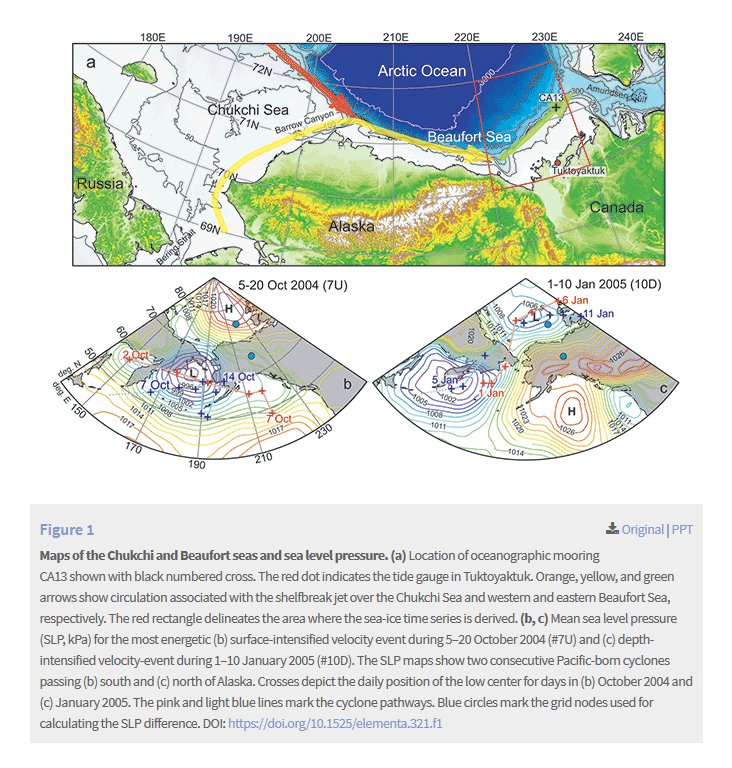Wind-forced depth-dependent currents over the eastern Beaufort Sea continental slope : Implications for Pacific water transport.
New publication by Igor A. Dmitrenko, Sergei A. Kirillov, Paul G. Myers, Alexandre Forest, Bruno Tremblay, Jennifer V. Lukovich, Yves Gratton, Søren Rysgaard, David G. Barber

Abstract:
Pacific water contributes significantly to the Arctic Ocean freshwater budget. Recent increases in Arctic freshwater flux, also affected by the Pacific-derived Arctic water, impact the Atlantic overturning circulation with implications for global climate. The interannual variability of the Pacific water outflow remains poorly understood, partly due to different branches of the Pacific water flow in the Arctic Ocean. The shelfbreak current over the Beaufort Sea continental slope transports ~50% of the Pacific-derived water eastward along the Beaufort Sea continental slope towards the Canadian Archipelago. The oceanographic mooring deployed over the eastern Beaufort Sea continental slope in October 2003 recorded current velocities through depths of 28–108 m until September 2005. Data analysis revealed that these highly energetic currents have two different modes of depth-dependent behaviour. The downwelling-favourable wind associated with cyclones passing north of the Beaufort Sea continental slope toward the Canadian Archipelago generates depth-intensified shelfbreak currents with along-slope northeastward flow. A surface Ekman on-shore transport and associated increase of the sea surface heights over the shelf produce a cross-slope pressure gradient that drives an along-slope northeastward barotropic flow, in the same direction as the wind. In contrast, the upwelling-favourable wind associated with deep Aleutian Low cyclones over the Alaskan Peninsula and/or Aleutian Island Arc leads to surface-intensified currents with along-slope westward flow. This northeasterly wind generates a surface Ekman transport that moves surface waters offshore. The associated cross-slope pressure gradient drives an along-slope southwestward barotropic flow. The wind-driven barotropic flow generated by upwelling and downwelling is superimposed on the background bottom-intensified shelfbreak current. For downwelling, this flow amplifies the depth-intensified background baroclinic circulation with enhanced Pacific water transport towards the Canadian Archipelago. For upwelling, the shelfbreak current is reversed, which results in surface-intensified flow in the opposite direction. These results are supported by numerical simulations.
Elementa: Science of the Anthropocene, Bind 6, 66, 23.10.2018.
